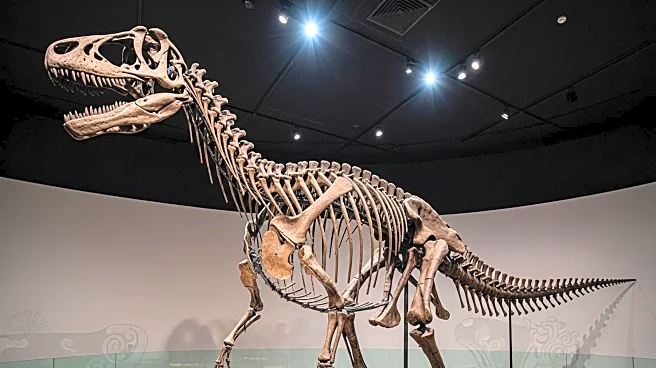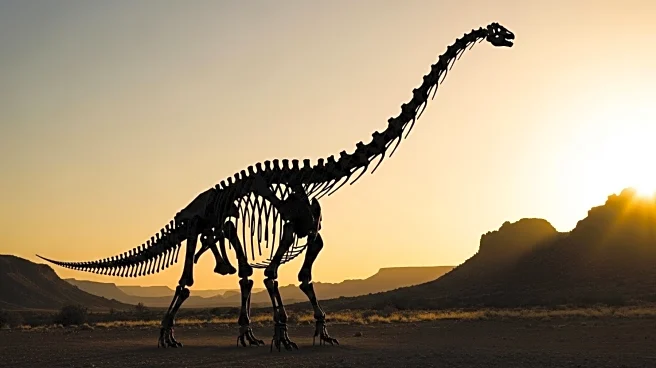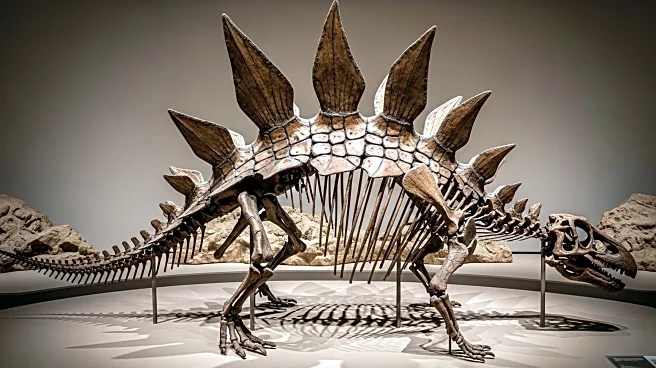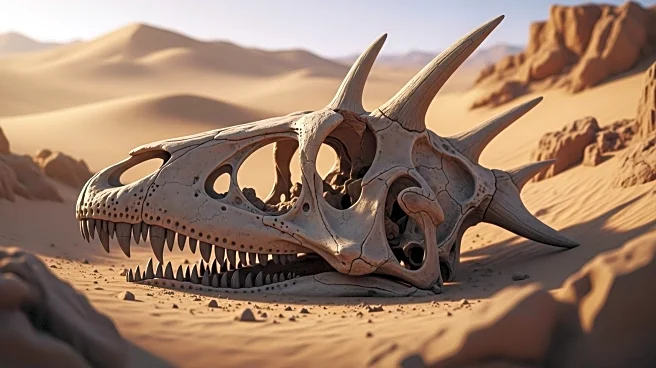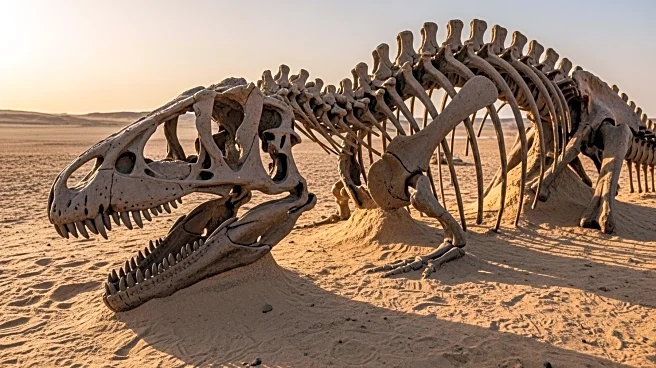What's Happening?
Paleontologists have discovered a new species of plant-eating dinosaur, Huashanosaurus qini, measuring 39 feet long in the Guangxi region of China. This new genus and species of early eusauropod from the Jurassic period was found in the Shiwandashan Basin of the Wangmen Formation. The partial skeleton includes vertebrae, ribs, humerus, ulna, fibula, and foot bones. The dinosaur likely resided in forested river and lakeside environments, prevalent in the region at the time. Phylogenetic analysis reveals that H. qini is likely the oldest sauropod in South China, dating to the early to middle Jurassic.
Why It's Important?
The discovery of Huashanosaurus qini increases the understanding of the diversity of Jurassic-era eusauropods in China and their evolution. This finding predates previously known sauropod fossils from the region by about 30 million years, offering new insights into the prehistoric ecosystems and the evolutionary history of sauropods. The research contributes to the broader knowledge of dinosaur biodiversity and the ecological dynamics of the Jurassic period.
What's Next?
The research team, consisting of scientists from various Chinese institutions, will continue to study the fossils to gain further insights into the evolutionary history and ecological role of Huashanosaurus qini. Future excavations in the region may uncover more fossils, enhancing the understanding of the Jurassic ecosystems and the diversity of sauropods.
